36 - Pests Part 1
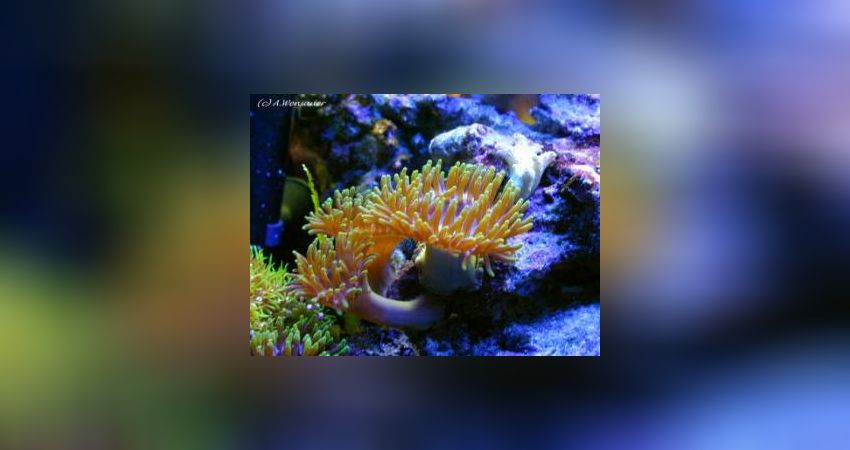
About the possibilities of eliminating unwanted guests, such as glass jellyfish or mini anemones from the genus Manjano.
Pests: Part 1
Glass roses (Aiptasia) and mini anemones (Anemonia cf. manjano)
For every aquarist, the day comes when the first glass roses are discovered. And at the latest when you find out what it is, you should start thinking about how to get rid of them. Waiting for it to get better on its own is useless :-) The longer you wait, the greater the chances of it becoming more. Unfortunately, glass lice tend to multiply well on their own, but they grow particularly well with a lot of food (frozen food and dust feeders). Glass lice belong to the anemone family, but unfortunately they are so resistant that they can survive almost anything. Even a few days without any water in the air will not kill them.
Glass lentils are so strong that they nettle everything they touch, the touched part of the other animal usually dies. The larger and more numerous glass lice become, the more damage they do to other animals!
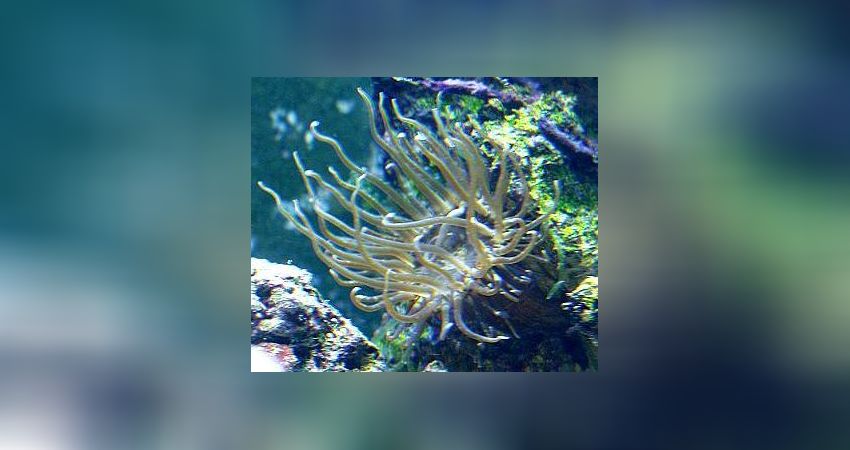

Most of the time they are brought in with the use of live stones, which is why it is important to have a good look at the stones beforehand. However, they are often not visible after the stones have been imported, or are simply still too small. You should also take a close look at purchased corals, such as the substrate stone, as this can often bring in other unwanted pests. Of course, you can minimise this by using artificial decoration stones or columns, but you cannot completely exclude it.
This article describes the methods known to us for removing glass lice, namely in a natural way (predators), with commercial products, but also which methods you can still use. As it fits in well with the topic, we will also go into the removal of Anemonia cf. manyano, the mini-anemone. This is a particularly beautiful mini-anemone that can have an incredible reproduction potential.
MinianemoneAnemonia cf. manjano : Often popular until you know what it is.... Often multiplies very quickly and displaces all other corals in the aquarium.
Natural predators:
There is a whole range of animals that have glass lentils on their menu. These include butterflyfish, filefish, shrimp and snails. Unfortunately, this is no guarantee for success, which is why we would like to go into more detail on the individual species below
1. Butterflyfish:
Many butterflyfish eat glass lizards, but also many other lower animals, so you will not have much fun with most species for long. Like no other, the Chelmon rostratus has the reputation of eating glass lizards. But it does not always do so! However, it belongs to those that do not eat other corals very often. Tube worms belong to its favourite food, this should be taken into account! However, keeping the fish is often very problematic in terms of food intake, which we have already described in the article Butterflyfish. Please read there again if you are unsure.
A small tip that might work if your Chelmon refuses to eat glass roses. Deliberately cut a glass lily so that it slimes off. The smell of the injured and slimy glass rose can give your Chelmon the idea that it is something tasty :-) Often works but unfortunately not always!

Besides Chelmon rostratus, Chaetodon kleinii is another butterflyfish that often comes into the trade and mostly eats glass lentils. It does this even more reliably than Ch. rostratus. Unfortunately, it is quite certain to eat other animals as well, which is why you often quickly regret having used it. Since it is actually always very hungry, it can be caught well with a food trap.
2. filefish:
The filefish Acreirychthys tomentosus:
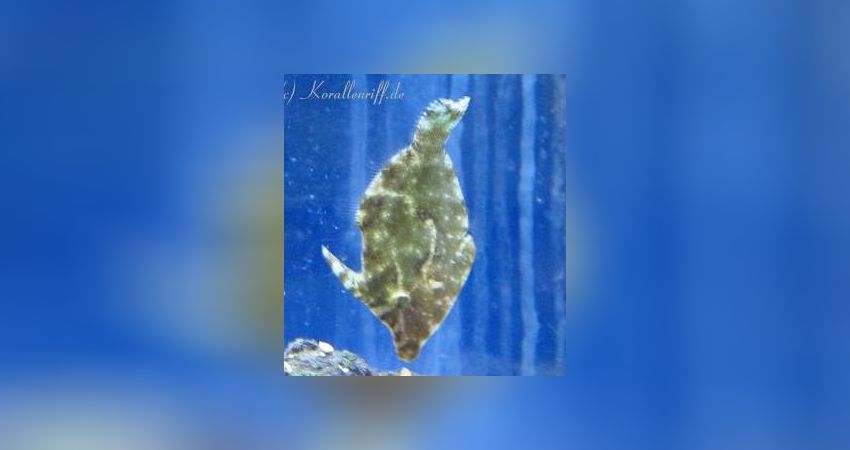
It too sometimes goes for glass rosefish and often even the lästy minianmones. Sometimes.... we write specially because it is unfortunately not certain. One A. tomentosus will eat it, the other not. There is also the danger that it can get into other animals, unfortunately there have already been experiences with this, even if they are rather rare. The advantage is that you can catch it out of the tank if necessary, the A. tomentosus is not one of the fastest. We also think it is an interesting fish to keep. However, the chances are quite high that it has glass lice on the menu.
3. Shrimps:
Here are especially two shrimps from the genus Lysmata to mention. The first is the well-known Lysmata wurdemanni and the Lysmata rathbunae, which is almost indistinguishable to the layman. Both shrimps have been proven to eat glass lice. Unfortunately, however, the use of these shrimps is not always successful, many aquarists report very different experiences. Some have eliminated their glass jellyfish within a short time, others hardly do anything at all. We suspect that the reason is that the food supply is too high, the easier it is for the shrimp to get their food, the less likely they are to get glass lice. It is good if you only have a few fish, then you can avoid too much food. Then the chances are very high that these shrimps will also take care of their glassworms. They live very hidden and are rarely seen.
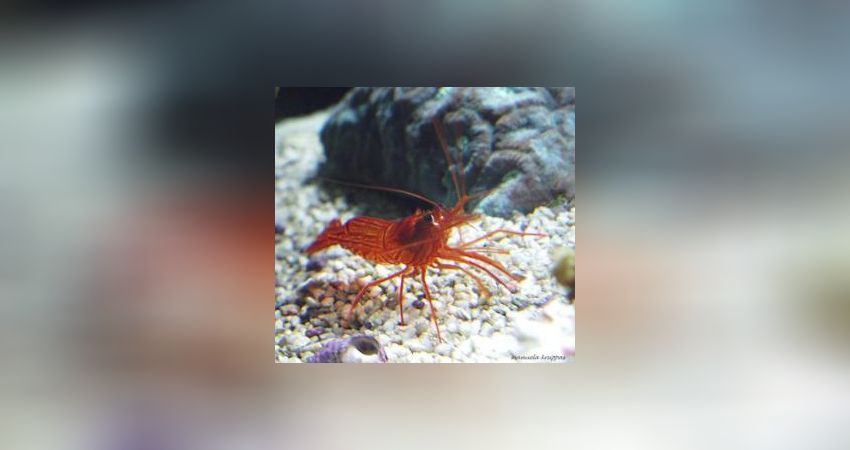
But beware, shrimps need a very careful adaptation to their aquarium water. Often the trade keeps its animals at far lower densities so that the fish show fewer diseases. Unfortunately, the difference is often striking, so that we have already been able to measure values with 1.017 density. If you now put such a shrimp into water with a density of 1.025, they will usually not survive. Like all crustaceans they are very sensitive to density fluctuations. It is advisable to acclimatise these animals slowly to the new water over a few hours.
4. snails:
Berghia verrucicornis, the glass-rosis-eating nudibranch: A few years ago it was almost impossible to get them here and at 50 euros they were very expensive, but now you can get them any time you want by breeding them with two biologists! And even at a moderate price.
This is a snail that specialises in glass lice and doesn't eat anything else! If there are no more glass lentils available, the snail dies and starves to death! That is why you should pass it on even if you no longer have any glass lice. If you think that you can get rid of all your worries by using a snail, you could be mistaken. On the one hand, a single snail will not become a plague, on the other hand, snails are also on the menu of some larger wrasses. However, the snail lives very hidden and is nocturnal, which offers it a certain protection.
It seems best to us to acquire a few snails and multiply them first!
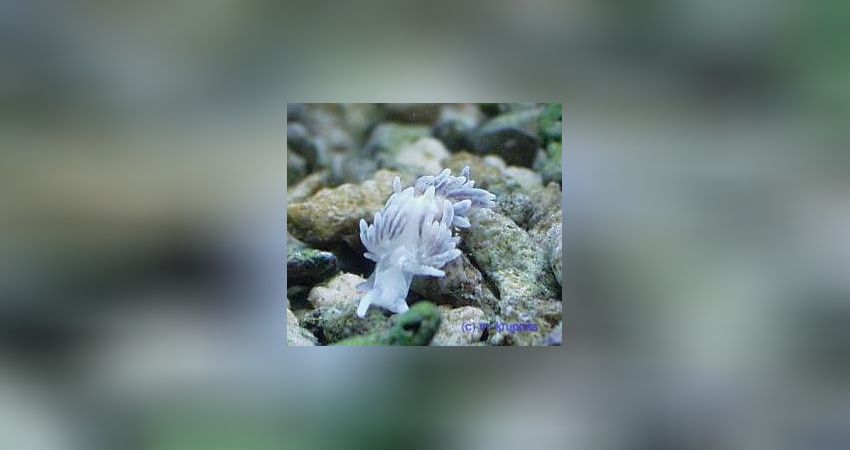
To this end, we offer you an article under the heading Nuisances, written by the two biologists Holger and Patrick. Since this snail is not available anywhere else, we are also happy to give you the link along the way. (www.pro-marin.de)
As you can see, there are several possibilities based on the animals we care for. Unfortunately, all of them are not completely safe, except for the snails. Nevertheless, there are also certain reservations here, not all those who have used the snail have had resounding success with it. The exact reason for this is beyond our knowledge. We ourselves had the problem that the nudibranchs we had kept years ago did not live long enough to deal with the many glass roses. The life cycle is very short, so that the use of these snails only makes sense if they are multiplied.
Sale products:
The trade has of course long recognised that the elimination of glass lice is always an issue and therefore offers some products. Since the beginning of December we have collected our experiences with some commercial products and would like to share them here. We have limited ourselves to three products.
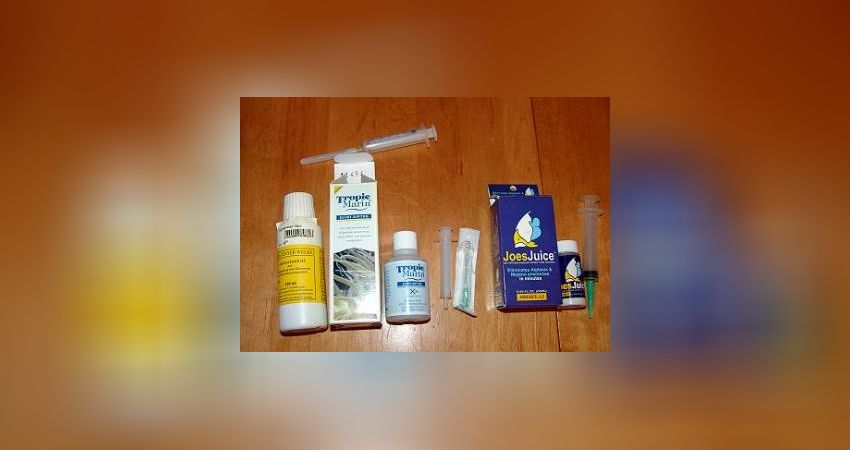
The products were as follows
1. Aiptasia Kill - Welke - 100 ml (10,25 €)
2. Elimi-Aiptas - Tropic Marin - 50 ml (7,50 €)
3. Joes Juice from the USA - 20 ml (12.95 €)
The Aiptasienkill as well as the Elimi-Aiptas are clear liquids, presumably based on a sodium hydroxide solution. When used correctly, this will cause the glass rose to decompose. The agent Joes Juice from the USA is a kind of viscous paste that looks similar to the already known lime paste. We will talk about this method later. While with the clear liquids you have to prick the glass rose with a syringe with a needle to administer the remedy, with the Joes Juice it is sufficient to filter the glass rose, at least according to the instructions. You draw up a little liquid and feed the glass rose with it.
You "only feed" and do not inject the pest as usual. It is easier to use but was not as effective in our experiment ! First the glass lice are gone, but then they often come back.
In practice our experiences were as follows.
Whoever catches the glass lice correctly with the liquid agents from Welke or Tropic Marin in the syringe can be sure that the glass lice will die. The problem is that you first need a little practice to catch the glass lice, which immediately retract on contact. If you don't hit them correctly, you will splash over them and will therefore not be successful. Spraying up to 20 glass lice in a 1000 litre aquarium had no effect on other animals.
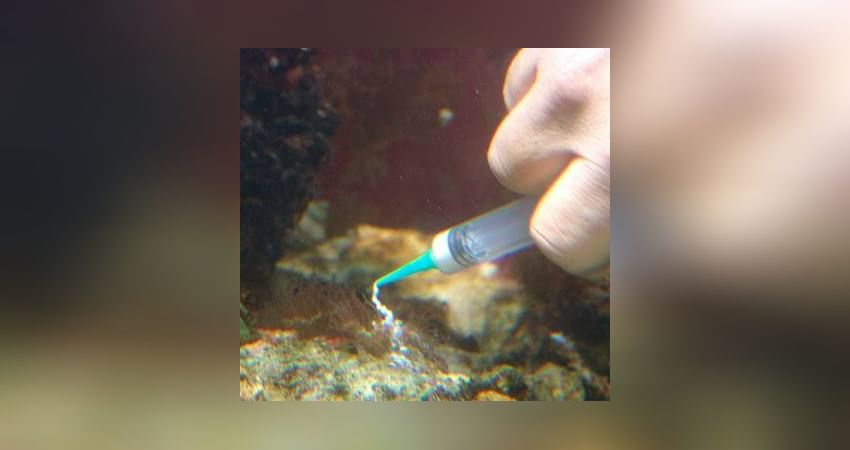
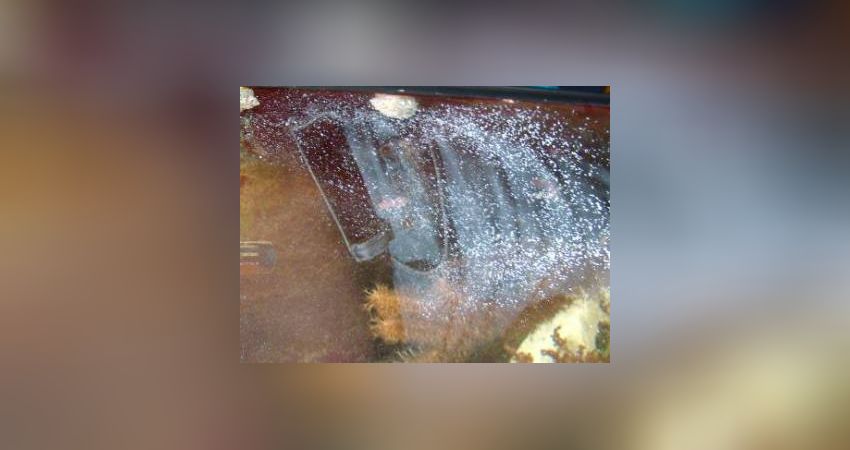
Different with Joe's Juice, which is only filtered. However, it is absolutely necessary to switch off all sources of current in the aquarium. It is absolutely necessary to prevent other animals from getting some of the mash. Unlike when using a syringe, the glass lice do not retract when they come into contact with the slurry. After a few seconds they do retract and become very small, the remedy seems to work. Unfortunately, after several attempts, at least half of the glass lice that had been killed reappeared, some after a few days and some only after four weeks. Another danger are glass roses that do not stand horizontally upwards but crosswise.
Here, a glass louse sitting at the very top of the glass was fed, which then expelled all the pulp again.
It happened to me several times that the administered agent was then expelled after ingestion and it then trickled through the tank. Luckily nothing happened because the flow pumps were off and the radius was therefore very small. So it is more suitable for easily accessible glass anemones - which look upwards.
The situation is different with Joes Juice for the control of Anemonia cf. manjano, as well as for crustose anemones. We have a few crustose anemones that are encrusting other corals and have been looking for a way to get rid of them for a long time. The use of the product from the USA was very successful. Both the mini-anemones and the crustose anemones perished.
We also have a similar reproduction problem with disc anemones. Of course, here too we tried using Joe's Juice, but the animal only looked bad for a fortnight. Unfortunately, the disc anemones did not die completely! It would be a blessing for many who have problems with this if there was something simple and effective.
As you can see, every product is more or less effective in its own way, often many applications have to be made! Easier to use is the Joes Juice... but in our eyes the liquid products from Welke or Tropic Marin were much more effective.
But there are many other ways to reduce glass lice. We would like to mention these below.
Other ways to fight glass rusts:
1. Calcium pulp method:
Long known and in my eyes still a good thing. Take a teaspoon of calcium hydroxide (for the production of lime water) and mix it with a little water. Then heat this mixture in the microwave (do not boil). This then produces a nice, slightly thick paste.
This paste is then drawn into a syringe (without a metal tip). I now recommend turning off the current in the tank so that you don't easily hit other animals with it! Because something can always go wrong..... which is not as bad when the current is switched off as when it is switched on.
Now you slowly go into the tank with your hand and spray the glass rose with it. Mind you, not into the glass rose, but about a centimetre in front of it.... You feed it with the paste, so to speak. The glass rose is unable to get rid of the pulp even if you pull it back quite quickly. After many long attempts, this works best with fresh calcium hydroxide! It is very important to get the right consistency with this method. But it still works quite well!
2. The hot water method:
Another possibility is the one described now:
You heat normal water until it boils and draw it into a syringe. Then you squirt the boiling water into the glass rose. This will inevitably contract. After that, you simply suck it off the stone with a water hose. If you do not do this, there is a great danger that it will recover. Therefore, be sure to vacuum it. The boiling water makes it far less resistant than usual.
3. Lemon juice:
Lemon juice can also be used to combat glass lice. However, the application is similar to the products based on caustic soda. It is advisable to use highly concentrated citric acid!
4. Saline acid:
Saline acid is also possible, but we would rather recommend products with sodium hydroxide. They can be used in the same way.
5. The flowerpot method - light deprivation:
Oliver Landwehr gave us the following hint: This is an alternative to all the chemicals and the animals! Simply place a small clay flower pot (with a hole in the bottom) upside down on a glass rose. As these animals also need the light, the glass rose moves upwards along the wall of the flower pot towards the opening. At the latest then you can safely dispose of the glass rose !
Conclusion:
We think that we could tell you most of the methods that come into question. Now you have to decide for yourself what is best for you. In any case, the control of glass lice requires a bit of experience... One of the authors has chosen the natural method, he uses a filefish. The other author usually uses a remedy based on caustic soda or the well-known homemade lime paste based on calcium hydroxide.
Frank Diehl, Robert Baur-Kruppas
How do you like this article?
Info
Author

Bookmark
Comments
Topics
Similar articles
- 0 - Marine aquaristics the 1x1
- 04 - Light
- 17 - Part 4 Filter systems - Berlin system
- 32 - Hairy stars in the aquarium
- How a marine aquarium is created Part 21: Cyanos, fish and DIY aquarium net cover
- How a marine aquarium is created Part 48-49: The new Maxspect Jump LEDs L165. 2 videos available
- 05 - Technical basin
- How a marine aquarium is created Part 32: The aquarium on holiday
- How a seawater aquarium is created Part 33: Avoiding osmosis water flooding with Auto Aqua Smart ASOV
- How a seawater aquarium is created-Part 8: The salt, salinity and density
Comments To the top
Es waren am ende ca.20 Feueranemonen und 5 Glasrosen.
Ich habe beide mit J%H Deletrix bekämpft ( flasche schütteln, milchiege Flüsigkeit auf eine spritze ziehen und einfach auf die Feueranemone oder Glasrose spritzen. Im wasser wird die flüssigkeit sofort zu einem brei und bleibt auf der behandelten stelle haften. Dieser brei löst sich selber inerhalb 1nes Tages auf).
Ich habe alle an einem tag ausgemertzt und konnte keine veränderrungen der wasserwerte feststellen. Sogar mein Mandarinfisch hat manchmal etwas von dem Brei gefressen und es hat ihm nicht geschadet.
Jetzt knap 6 Monate nach der Plage hbe ich immer noch keine neuen Glasrosen oder Feueranemonen entdecken können.
Fazit: Tolles Mittelchen, dass sehr einfach anzuwenden ist und schnell und efektiv auch auf lange Sicht wirkt
Ich habe eine Frage:Fressen die Garnelen, Falterfische,(...) nicht auch die für teures Geld erstandenen Anemonen?Würde mich über eine Antwort Freuen(ich nehme mein Becken erst Wheinachten in Betrieb)
mfg wertu
Auch ich hatte das vergnügen, mich mit Glasrosen zu Ärgern. Aber Dank meinem Pärchen von 2. Feilenfische:
Der Feilenfisch Acreirychthys tomentosus:
sind sie nun wech.
Jetzt habe ich nur das Problem, das ich die Fische im Technik becken auf bewahre, weil sie sonst wirklich auch an meine Krustenanemonen gehen.
Also wer vieleicht noch ein Pärchen Feilenfische:
Der Feilenfisch Acreirychthys tomentosus: gebrauchen kann, der kann sich gerne bei mir melden.
Mit Meeres
Grüßen
Michael
Wo kommst Du denn her?
Bin auf der Suche nach einer Reduzierung meines Glasrosenbestandes.
Please register
In order to be able to write something yourself, you must register in advance.











